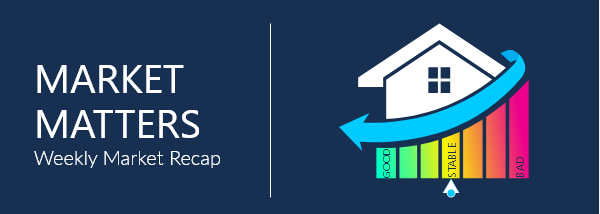Market Matters

We saw a reversal from last week with investors taking a risk-on position that lead to a sell-off in the 10-year in the middle of the week with stocks rallying. We did see some hotter than expected employment data this week as well, with both ADP and Non-Farm payrolls coming in significantly higher than expectations. Wage growth was muted, missing expectations. Looking forward to next week, we expect the market to keep their focus on the coronavirus and the impact it is having on China and their economy. While there is plenty of room for the 10-year to move lower with more bad news from the coronavirus, news of a cure can send rates up higher quickly.
 Factory Orders
Factory Orders
December factory orders came in up +1.8% MoM, beating expectations of +1.2%. Digging into the details, factory orders excluding defense was -0.6% MoM, while factory orders
ex-transportation was up 0.6% MoM. Durable goods orders came in up 2.4% MoM, while ex-defense was -2.5% MoM and ex-transportation was -0.1% MoM. Total factory inventories and shipments both increased 0.5% MoM, while inventory to sales ratio came in at 1.398, the highest level since 2016.
 ADP
ADP
The ADP Employment Report for January showed a strong +291k gain in private payrolls vs. the expectations for a +157k print. The January increase follows a downwardly revised +199K increase in December, originally released at +202k. Within the report for January, we see strong gains in construction of +47k, and in leisure/hospitality at +96k. According to Moody’s, who now produces the ADP report, they said that, “Mild winter weather provided a significant boost to the January employment gain.”
 ISM Non-Manufacturing Index
ISM Non-Manufacturing Index
The ISM Non-Manufacturing Index for January increased to a reading of 55.5, the highest levels since August of last year. The data for December was revised down to 54.9 from an originally reported 55.0. Again, any reading above 50 indicates expansion in the services sector, which accounts for over
two-thirds of U.S. economic activity. New orders increased to 56.2 from 55.3 in December, while the survey’s index for employment slipped to 53.1 from 54.8 in December.
 Nonfarm Productivity
Nonfarm Productivity
Nonfarm Productivity, which is a measure of hourly output per worker, increased at +1.4% annualized rate last quarter. If we compare to Q4 in 2018, productivity increased at a +1.8% rate. Growth in unit labor costs, which is the price of labor per single unit of output, slowed to a 1.4% rate. Compared to Q4 2018, labor costs grew at a 2.4% rate. Finally, hours worked rose at a 1.1% rate, while hourly compensation increased at a 2.8% rate. Overall, while productivity picked up in Q4 of last year, investment spending has led to a slowdown, and it’s expected that the trend should continue to slow, far from pushing core PCE inflation above the Fed’s 2% target.

